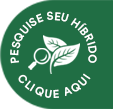Field
All Burley cultivars released by ProfiGen, including the hybrids licensed by the University of North Carolina – USA and the University of Kentucky – USA, are produced from basic seed selected for low conversion of nicotine to nornicotine. The basic seed is from plants with a maximum conversion rate of three percent (3%), in compliance with the protocol developed by the University of Kentucky – USA.
Field
Soil Preparation
Soil analysis is recommended to determine its level of fertility and pH and so allow that eventual pH corrections can be made as well as the fertilizer recommendation for the next crop. In general, for the production of tobacco, there are three types of soil management practices: conventional preparation, minimum tillage and no tillage system.
In the conventional system, the time and plowing depth depend on the relief, geography and type of soil. Subsoiling and disking also depend on the same factors.
Soil preparation requires good planning and careful execution, once planting healthy seedlings and proper fertilization is not enough if soil physical conditions do not favor plant development.
In many cases the recommendation is for planting the seedlings on ridges. This method generates better soil aeration, and triggers the development of the roots, facilitating water and nutrient absorption and uptake. Ridge height and width also depend on several factors, such as type of soil, declivity and history of rainfall.
Transplant
There is no rule regarding the ideal size of the seedlings to be transplanted. In general for Brazilian conditions it takes 70 days for the seedlings to reach the necessary size for manipulating them and for withstanding the field conditions.
As there are several geo-climatic zones for the production of tobacco in Brazil, transplant time varies a lot from one region to the other.
The real factor to consider at transplanting is the climate. No transplanting should be done while there is still risk of frost or extremely low temperatures. Frost conditions could kill the seedlings, while very low temperature could induce early flowering. Therefore, transplanting time differs from region to region.
Fertilization
Fertilizers for the production of tobacco should not contain any chlorine. Only the fertilizers authorized by the companies should be utilized. The companies have their own recommendations and they must be followed.
In general, three fertilizer applications are suggested for the production of tobacco. The suggestion might vary according to soil type and fertility and precipitation levels during the cycle. The amounts to be applied should be based on soil analysis and type of soil.
The first fertilizer application, also called base or basal fertilization, is normally made some days before transplanting. The purpose of this practice is to provide the young plants the necessary amounts of nitrogen, phosphorus and potassium for its development. Transplanting right after the first fertilization is also common practice. In the case of ridges, they are normally mounted over the fertilizer.
The second and third fertilizer applications, also referred to as sidedressing, have the purpose to provide the plants with larger quantities of nitrogen, while restoring the level of potassium. They are normally carried out about 20 to 40 days after transplanting. This recommendation may vary according to type of soil and precipitation levels over the period and the characteristics of the variety. There is no way of expressing the amount of fertilizers in numbers due to soil and climate variations in the tobacco farming regions.
Flowering and Topping
Under normal temperature and weather conditions, bud sprouting of the varieties released by ProfiGen normally occurs 60 days after transplanting, sometimes taking more than 80 days, depending on the weather conditions. Excessively low temperatures and other plant stress inducing factors could cause the plants to flower prematurely, in any growing stage.
The non flowering type varieties (NF) are not so prone to this early flowering.
The recommended topping height depends on the vigor and nutrition of the plants, once the purpose of this practice is a good leaf development. The best results that combine yield and quality are obtained when the plants are left with about 20 leaves. As mentioned above, this number could be a little smaller or bigger, depending on the growing stage.
The right time for topping can also vary. If correct fertilization was provided and the plants are well nourished, topping is recommended right after bud sprouting. In cases of excessive nitrogen, a delay in topping would be ideal, allowing the nitrogen surplus to be consumed and drained by the flowers.
Harvesting
In general, harvesting can be started a week after topping. On the other hand, there is research work indicating an improved yield and quality when the lower leaves are harvested before topping.
The basic recommendation is for harvesting mature leaves. Within this context, unripe or overripe leaves should not be harvested. If this standard is not complied to, the quality of cured leaves could be seriously impaired.
In the case of water stress or extremely warm temperatures, the leaves may look ripe even if they are not. This situation might induce the harvesting of unripe leaves, resulting in significant quality loss.
When a tobacco field is established, it is important to take into consideration the capacity of the curing facilities. As 2 or 3 leaves are picked at every priming, it should be the basis for determining the size of the tobacco field and number of plants per curing barn.
Veja também
-
Aprenda a cultivar
- Visão Geral
- Mudas
- Lavoura
- Cura
- Visão Geral
- Mudas
- Lavoura
- Cura
